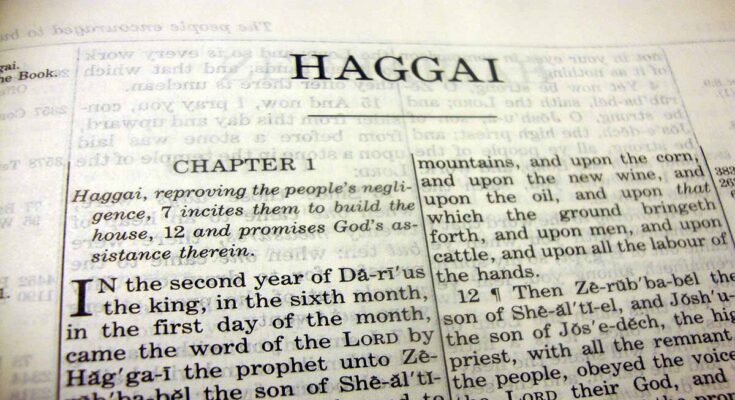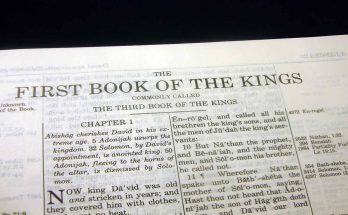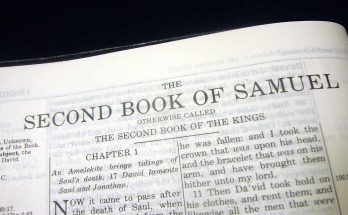The Book of Haggai
In the book of Haggai, when the exiles first returned from Babylon, they set about rebuilding the temple right away. Although they began with the right attitudes, they slipped back into the wrong behavior, and the work came to a standstill. In the same way, we need to be on guard to keep our priorities straight. Remain active in your service to God and continue to put first things first.
Haggai’s basic theme is clear: the remnant must reorder its priorities and complete the temple before it can expect the blessing of God upon its efforts.
Verses 6 through 9 record some of the most startling prophecies in Scripture: “I will shake heaven and earth, the sea and dry land” (the Tribulation) and “they shall come to the Desire of All Nations” and “in this place I will give peace” (the second coming of the Messiah).
Writer of Haggai
This book was written by the prophet Haggai, whose name means “festive.” Like those whom he encouraged, he probably spent many years in captivity in Babylon before returning to his native land. He delivered these messages of encouragement “in the second year of King Darius,” a Persian ruler. This dates his book precisely in 520 B. C.
Historical Setting of Haggai
Haggai takes us back to one of the most turbulent periods in Judah’s history. For more than 50 years they were held captive by the Babylonians. But they were allowed to return to their native land, beginning about 530 B. C., after Babylon fell to the conquering Persians.
Theological Contribution
Haggai urged the people to put rebuilding the Temple at the top of their list of priorities. The rebuilt Temple in Jerusalem was important as a place of worship and sacrifice. Centuries later, at the death of Jesus “the veil of the Temple was torn in two” (Luke 23:45), demonstrating that He had given Himself as the eternal sacrifice on our behalf.
Special Consideration
The book of Haggai ends with a beautiful promise of the coming of the Messiah. Meanwhile, God’s special servant, Zerubbabel, was to serve as a “signet ring” (2:23), a sign or promise of hope for the full restoration of God’s covenant people in their native land.
Scripture Study Resources
ESV Study Bible – Study Bibles give you a deeper understanding of God’s Word with tools for life application like commentary, maps, charts, concordance, and study notes. Search our popular translations- NIV, ESV, NKJV, KJV and more!
Believer’s Bible Commentary: Second Edition – A Bible commentary is a written, systematic series of explanations and interpretations of Scripture. Commentaries often analyze or expound on individual books of the Bible, chapter by chapter and verse by verse. Some commentary works provide analysis of the whole of Scripture.
The New Strong’s Expanded Exhaustive Concordance of the Bible – The best concordance for word study! This exclusive new edition of a legendary classic puts generations of biblical research at your fingertips. A valuable tool for pastors, teachers, and students of the Bible.
Vine’s Complete Expository Dictionary of Old and New Testament Words – This classic word study resource allows you to study the meaning of biblical words in the original languages without spending years learning Greek or Hebrew. A great resource for students, seasoned pastors, and anyone who enjoys biblical word studies–even if they have little to no formal training in Hebrew or Greek.
Halley’s Bible Handbook – The beloved and classic Bible companion has been thoroughly updated, while retaining its time-honored features and Dr. Halley’s highly personal style, to offer even greater clarity, insight, and usefulness.
Click here to print or download the scripture outline of the book of “Haggai: The Reconstruction of the Temple“




